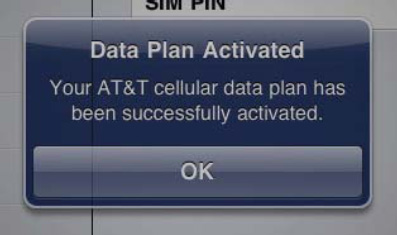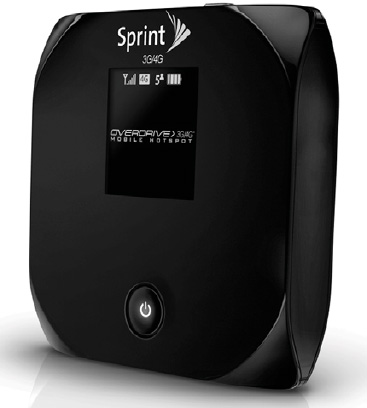Although your iPad can theoretically be used unconnected with no real links to the outside world, it's designed to be an Internet-ready tool. It offers built-in Wi-Fi or Wi-Fi + 3G connectivity, and most of the default apps are useless without having an Internet connection of some sort.
Without the Internet, you'd have no need for Mail to send and receive messages, and there would be no reason for the Safari web browser. You wouldn't be able to pull up maps, YouTube would just be a bland icon taking up space on your Home screen, and you couldn't buy apps from the App Store, books from the iBookstore, or music, movies, and videos from iTunes. Facebook and Twitter? Forget about them without that Internet connection.
Fortunately, Apple makes it simple for you to connect to the Internet. In this chapter, we'll tell you how to make and troubleshoot Internet connections through Wi-Fi and 3G and discuss an alternative to the built-in 3G.
Wi-Fi is the common name for wireless networking based on the IEEE 802.11 standard. Although Wi-Fi has its roots in the early 1990s, it has really taken off in the past ten years, with Wi-Fi access points now available in many public places such as hotels, libraries, restaurants, and even buses and airplanes.
For many people, Wi-Fi access points were a godsend for home networking because it meant that computers and printers could be connected to each other without the expense and inconvenience of installing cabling. In most cases, a Wi-Fi router is attached directly to a home cable or DSL Internet modem to provide wireless Internet to any computer within range.
Your iPad supports Wi-Fi connections under the 802.11b/g/n standards. It's not necessary to know what each of these standards means, other than that the maximum raw data rate (the speed at which data is pumped to your iPad) increases with each successive standard. The iPad and Wi-Fi router will communicate with each other based on the highest common standard, so if your Wi-Fi router supports only 802.11b, the rate at which the two devices will talk will be limited to 802.11b speeds. Likewise, if you have one of the newest Apple AirPort Extreme Wi-Fi routers, your iPad communicates with it using an implementation of the fast 802.11n standard.
One important factor for all Wi-Fi networks is the use of encryption. Encrypted networks require that a password or passphrase be entered when joining the network for the first time. The password not only authenticates your iPad to the network, essentially making sure that you are allowed to use that network, but is used as a key to encrypt any data that is transferred between your iPad and the router.
Both authentication and encryption are important for any wireless network. Setting up authentication on your home or office network ensures that no unauthorized person can use your wireless network without your permission. This is important, since providing access to your Internet connection to anyone who happens to be in the area can be considered a breach of the terms of service with many Internet service providers. In addition, if anyone commits a crime from a computer connected to your wireless network with or without your knowledge, you can be held accountable.
Likewise, encryption makes it difficult for hackers to intercept and decode transactions between your iPad and any other computer. This is extremely important when you're performing monetary transactions. There are three major types of encryption that are in place on most home, office, and public Wi-Fi networks at this time: WEP, WPA, and WPA2. WPA2 is the successor to the WPA encryption standard and is considered (when used with a strong passphrase) to be extremely secure.
Why are we discussing authentication and encryption in a book about iPads? Well, if you're unfamiliar with Wi-Fi networks, the topic will definitely come up when you try to connect your iPad to the networks.
Your iPad isn't going to automatically connect to the Internet the moment you turn it on. Why? Apple wants you to set up syncing with iTunes first, and that's always done through a USB connection to another computer. Once you've completed the setup, you're free to get connected to the Internet, and for most people, that initial connection is done with Wi-Fi.
You'll need to know your network password or passphrase, as well as the name of the network to which you want to connect. Knowing the name can be very important if you live in an apartment building where there are many wireless networks within range. A pop-up appears on the screen asking you to enter the network password, and once you've entered it correctly, you are connected to the network.
In Figure 5-1, there are two networks within range of the iPad. The lock icon signifies that you need to enter a password or passphrase before you can connect to the network, while the AirPort icon (the fan-shaped icon to the right of the lock) indicates the relative signal strength of the network.
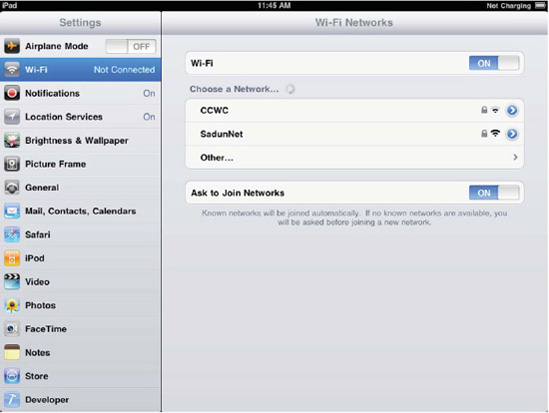
Figure 5.1. In the Settings app on an iPad with Wi-Fi only, the top switch allows you to toggle Wi-Fi settings on and off.
To enter the password and join the network, tap the network name, and a password screen appears. Type in your password or passphrase, and then tap the Join button on the iPad's virtual keyboard. If you've entered the password correctly, the network name turns blue and a check mark appears next to it, indicating that it is the selected network. If you didn't enter the correct password, you'll see an error message similar to the one in Figure 5-2. Tap the Dismiss button, and try again.
If your iPad Wi-Fi is not enabled, you can turn it on by going to Settings
Your iPad remembers networks that you've joined so that you don't have to reenter network information every time you move to a new wireless network. If there is no known network nearby, either you have to manually select the new network or you'll be asked if you want to join a new network. What's the difference? It all depends on whether the Ask to Join Networks button (see Figure 5-1) is set to On. If it isn't, you have to manually select the network, and if it is, your iPad will ask you whether you want to join the new network.
When you are connected to a Wi-Fi network, the Wi-Fi icon in the status bar displays your connection strength. More full bars (up to five) indicate a stronger connection.
There are some common issues that new iPad owners may run into. Here's a brief discussion of some of them that you may encounter.
In this case, the network may be closed or private, meaning that the service set identifier (SSID), which is the network name you normally see listed in the Choose a Network list, has been set as hidden. To connect to the network, you'll need to tap the Other button, shown earlier in Figure 5-1, which displays the screen in Figure 5-3.

Figure 5.3. Entering information about hidden networks is useful when using iPads in corporate environments.
Ask your network administrator the name of the network, and enter that in the Name field. It's also a good idea to ask them what type of security has been set up on the network, since you'll need to choose that by tapping the Security button and then tapping the corresponding button on the Security screen, shown in Figure 5-4.
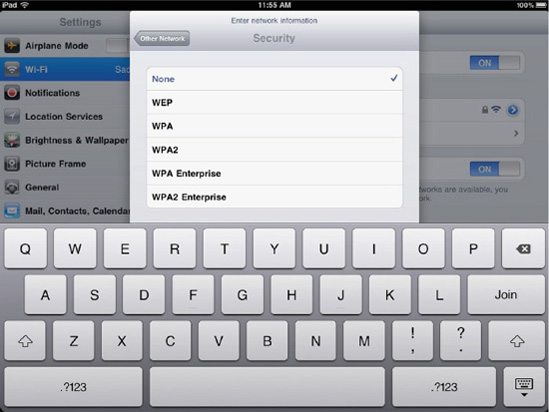
Figure 5.4. The iPad uses settings to define the type and level of encryption used to keep your data from prying eyes.
What do these acronyms stand for? Wired Equivalent Privacy (WEP) is an aging method of securing wireless networks. Then why is WEP available on the nice, new iPad? It exists primarily for the benefit of people who haven't upgraded their Wi-Fi access points to newer, more secure technology.
WPA stands for Wi-Fi Protected Access, another aging security technology. WPA Enterprise was a standard encryption algorithm with additions that made it more "bulletproof" for corporate use.
If at all possible, you should use WPA2 or WPA2 Enterprise security to ensure that your data is protected in transit. WPA2 is the most secure existing Wi-Fi security method at this time. It's recommended that you use a truly random passphrase of 13 or more characters for even better security, although it may be more useful to just use a longer—but more memorable—passphrase.
What does memorable mean? Something that you can easily remember but would be very difficult for someone else to guess. For example, a passphrase of "ilovemydogfredandhesmyfavoritepet" or even "ilmdfahmfp" (i.e., the first letters of the words of that same phrase) is much easier to remember than "X1F39%@233.abc$@#@."
Once you've entered the network name and security type, you'll be asked for the password or passphrase and can continue to connect to the network.
This means that the password you're entering is too short for the type of security enabled on the network. Make sure you have the right password, and then try again.
Some Wi-Fi routers have default passwords. Either contact the manufacturer's website to find out what the default password is or change the password to something you can remember. The latter solution is recommended in order to maintain security on your network.
Wi-Fi access points and routers have a limited range, particularly when there are concrete walls, walls with a lot of wiring or piping in them, or microwave ovens in use nearby. Either move closer to the Wi-Fi access point or try to avoid the sources of interference.
This is quite normal with public Wi-Fi networks, including the AT&T wireless hotspots in U.S. Starbucks locations. If you're in a location that requires you to pay for Wi-Fi, a login screen may appear into which you'll have to enter subscription information or purchase access time. If it does not appear, open the Safari web browser on your iPad, and the screen should appear.
Make sure that you are connecting to the correct Wi-Fi network and not another one nearby. If you are trying to connect to the proper Wi-Fi network, then the connection from your Wi-Fi access point or router to your cable or DSL modem may be down. If that connection looks fine, then your Internet service provider may be having issues. You can test this by checking other computers at your location to see whether they're able to use the Internet.
This is more common than you'd imagine. Many people purchase Wi-Fi access points or routers and never change the name from the factory-set one. In heavily populated areas, it's not uncommon to see a number of networks named "Linksys." If you're in this situation, contact the router manufacturer for information on uniquely naming your Wi-Fi network.
It may be time to reset the network settings on your iPad. To reset network settings, tap Settings
If you can't connect to your network, then try to see whether your iPad can connect to a publicly available network. For instance, if you have an Apple Store close by, try connecting to their network. At least if that doesn't work, you can always confer with the Apple Genius Bar at the store.
For most people, the default Wi-Fi settings work perfectly. However, there may be situations where you are connecting to a network that requires special settings. In this case, you may be asked to change those settings on your iPad.
You can access special Wi-Fi settings by going to Settings
The first thing you may be asked to change is the way in which your iPad receives an Internet Protocol (IP) address. Most of the time, that's done through something called Dynamic Host Configuration Protocol (DHCP). When your iPad is set up to get a network address using DHCP, it asks for an address when it joins a network and is then given a "lease" that lasts a certain amount of time. That lease usually renews automatically. If you ever need to renew the DHCP lease manually, there's a Renew Lease button on the DHCP tab of the Settings screen you can tap to do that.
Another way to get an IP address is through Bootstrap Protocol, or BootP (Figure 5-6). The BootP tab shows information that may need to be changed for your iPad to receive an address from a pool of addresses registered on a configuration server.
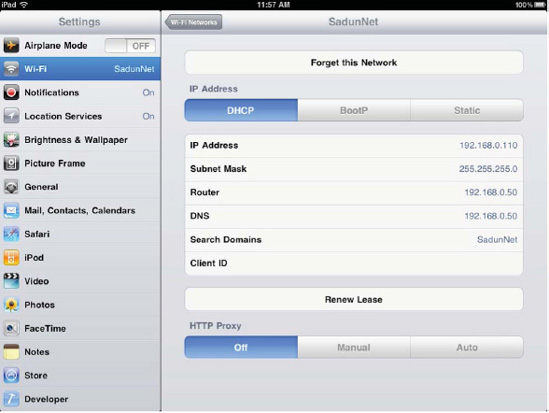
Figure 5.5. You may never need to change or view your network settings. This is where you can control those settings in those cases where it's necessary.
Finally, some networks require a fixed, or static, IP address (Figure 5-7). In this case, you're usually given a static IP address, a subnet mask, and router and DNS server addresses to enter into the appropriate fields in order to connect to the network. Check with your system administrator to find out these values in advance.
On each of the three tabs of the Settings screen (DHCP, BootP, and Static), you will find three buttons for HTTP Proxy. These are visible in Figures 5-5 and 5-6. In Figure 5-7, the HTTP Proxy section is hidden by the keyboard. A proxy server is a computer system that acts as an intermediary between your computer and some other server. Many companies, for instance, require all web traffic from computers to pass through a proxy server to log or audit usage. If you need to enter proxy information, your system administrator will give you instructions on the settings needed.
The iPad ships in both Wi-Fi only and Wi-Fi + 3G models. 3G models are now available in the United States from both AT&T and Verizon. Outside the United States, other carriers provide 3G cellular data service on a country-by-country deployment.
3G is a family of mobile telecommunications standards allowing simultaneous voice and data services. Apple has chosen to follow the Global System for Mobile Communications (GSM) standard in its telephony products, the iPhone family, and the iPad Wi-Fi + 3G. This standard predominates world mobile telephone systems, which means that iPhones and iPads with 3G capabilities can be used worldwide, although international data roaming is usually quite expensive.
3G bandwidth is generally more limited than that of Wi-Fi, but 3G is valuable because the data service is available almost anywhere there is a 3G system in place. That means you can generally use your 3G service while traveling, not just when you're at a local Wi-Fi hotspot like your home, office, or an Internet-ready coffee shop. Wi-Fi is limited to short-range, high-bandwidth connections; 3G is wide-range but lower-bandwidth connections.
What can you do with a 3G connection? A lot. On a 3G-equipped iPad, you're able to browse the Internet with fairly fast response, send photos and even small movies to friends via e-mail, watch YouTube videos, and (as you'll find in Chapter 8) purchase and download apps, music, and books.
The mobility you gain with 3G service comes at a price. You need to sign up for a cellular data plan, which is generally offered on a prepaid month-by-month basis. Prepaid service means you are charged for the service at the start of the month, rather than at the end, which is the more common way of offering service on the iPhone. It also means that you can cancel at any time because your month of use has already been charged to your credit card.
If the majority of your iPad use is going to be in an office or home with Wi-Fi service and you intend to use your 3G service only for occasional e-mails on the road, then you'll probably be good with a more-rationed, lower-bandwidth plan. If you find that the lower-tiered data plans are too limiting, most countries and carriers offer a higher-tier plan with more available bandwidth. Plans and bandwidth vary by carrier, so you will need to do a little research based on your home country and the model of iPad you have purchased. For example, in the United States, you cannot switch service for a Verizon-ready iPad to AT&T service. The hardware limits you to a carrier due to the way the unit connects to the cellular data network.
To determine what your 3G usage is at any time after you've signed up for a monthly plan, go to Settings
There's a very easy way to tell you have a Wi-Fi + 3G iPad in your hands without looking at the box; when you turn it on, the left side of the status bar shows the name of the 3G carrier and the signal strength at your location (Figure 5-8).

Figure 5.8. The iPad with Wi-Fi + 3G shows the carrier name and signal strength, as well as the network type (3G, EDGE) on the left side of the status bar.
Setting up your 3G data plan is fast and only requires a credit card. With your iPad turned on, tap Settings
Moving along through the form, you'll come to the terms of service. Read through them if you desire, and then tap the Agree button to move through the process. The terms of service will vary by carrier as well.
Some carriers allow you to add a one-time international plan as well. These plans are very expensive. Make sure that the countries you plan to travel to are supported by the international plan. Select the date that you want to start your international plan, and then tap the Done button. If you're not going to be traveling abroad soon, don't tap any of the plans, and just tap Done to continue.
Generally, a few minutes after signing up for a data plan, a notification (Figure 5-9) appears on the iPad display telling you the data plan has been activated. That means that you're all set for wandering around town with your iPad, free from the restrictions of needing to be near a Wi-Fi access point. In the United States, if you're now an iPad data customer, you will receive free Wi-Fi at either any AT&T or any Verizon hotspot, depending on your subscribed service.
When you're using your iPad internationally, it's a very smart idea to know what cellular company or companies your international plan uses and how to turn off data roaming. If data roaming is turned on, your device may connect to a cellular carrier that does not have an agreement with your home carrier, in which case you'll be charged an even higher rate. To disable data roaming, select Settings
For GSM iPads such as the AT&T iPad 2, research your carrier's international roaming partners. Go to the carrier's website and look up the partner carriers, the technologies used, and the frequencies.
When traveling with a Verizon iPad, its CDMA service makes connecting to local data more difficult. Because of this, you may want to consider renting a small mobile Wi-Fi unit like the Novatel Wireless MiFi hotspot. MiFi hotspots provide portable networks that you can connect to from your GSM or CMDA iPad or laptop without using your iPad's built-in data service. You need not enable data roaming on your iPad to access the Internet through a MiFi's cellular data.
XCom Global is one vendor that rents MiFi units for international use. For about $18 a day, you gain access to local data, which is easily served over Wi-Fi to your iPad or laptop. You can, of course, purchase your own unit directly and then shop for SIMs while on-the-go, but having a preprovisioned device that works directly out of the box is a big win for many travelers.
The coverage areas and expected bandwidth vary. For example, you can expect 7.2Mbps in the United Arab Emirates but only 1Mbps in Guam. Check the coverage maps at the XCom site to make sure the areas you are visiting will allow service.
If you are traveling between countries, you can set up multiple unit rentals through XCom Global. You are still charged a daily rate beginning when your travel commences and ending when you return to the United States. The company's FAQ page answers many common questions about their service.
While traveling, your data usage is unlimited. So what does "unlimited" data mean? Check out XCom's "fair use" terms. Providers in various countries may cap usage or throttle bandwidth for users who draw heavily on data, but for normal computing needs (assuming you're not downloading several multigigabyte movies per day), you should be covered.
Rent for 7 days, and XCom throws in free shipping (normally $29.90 for FedEx 2Day; you will pay extra for overnight regardless). If you are renting for over 14 days, the daily rate goes down to $16.15/day. One thing you'll want to consider is adding the option for the $2.50/day battery booster pack. MiFi works best when it's always on—a battery pack offers a way to avoid switching it on and off (although it will get quite warm, so be sure to keep it in a ventilated bag or pocket). Alternatively, you can supply your own battery pack.
We recommend the ZAGGsparq battery pack. This $100 device is international-aware, allowing you to charge from 220V sources; you don't need a voltage converter, as a simple outlet adapter is fine. This will save you the rental fees and provide handy power on the go even when you're back at home (it's rated to recharge an iPad four times over).
Also, you may consider opting for the insurance. At about $4/day, it covers up to three devices, allowing you to worry less about pickpockets and lost equipment. With insurance, you will pay a $160 deductible per unit rather than the $800 XCom normally charges. Three devices, $480, which is quite a bit less than the $2400 you're on board for.
Together all these charges do add up to a hefty $25/day or so, not counting possible shipping costs, but as a business expense, that's relatively little compared to what you'll be spending on flights, hotels, food, and incidentals. It's unquestionably a much better deal than paying roaming data charges.
Summarizing this section, the key things to know when you're taking your iPad Wi-Fi + 3G overseas are to turn off data roaming and to "know before you go."
Your iPad is very helpful in letting you know when you're getting close to the bandwidth limit on your data plan. It notifies you when you have 20 percent left, when you have 10 percent remaining, and when your plan has run out of data. You can decide to either stop using data at this point, purchase another data plan, or (when available, as carrier offers do vary) upgrade your plan for a higher bandwidth allotment.
To upgrade your data plan, change a credit card, edit your address information, or buy an international data plan, select Settings
When you're flying with an iPad with Wi-Fi + 3G, it's just as if you have a large mobile phone in your possession. Although airlines are much happier with Wi-Fi these days, with many actually providing in-flight Wi-Fi service, you'll still find that 3G and other mobile connections are frowned upon while you're in the air.
Like an iPhone, the iPad with Wi-Fi + 3G has controls for being switched into Airplane Mode. To turn on Airplane Mode when the flight attendant makes the announcement that "all cellular phones must be turned off," launch Settings. The first control available at the top of the page (Figure 5-10) is the Airplane Mode switch.

Figure 5.10. Apple knows how important it is to turn off that 3G radio in your iPad during a flight. That's why Airplane Mode is the first setting available in the Settings app.
Slide the Airplane Mode switch to the right so that the switch turns to On and disables Wi-Fi, 3G, and Bluetooth. When you want to use Wi-Fi during a flight, you can do that by tapping the Wi-Fi Settings button located just below Airplane Mode and then enabling Wi-Fi, separate from any 3G service.
One way of getting mobile connectivity without built-in 3G in your iPad is to use a mobile broadband router. These devices are available from a number of cellular carriers and are small boxes that attach to a 3G network and then allow up to five devices near the box to share the 3G connection.
In the United States and Canada, mobile broadband routers are available from Novatel Wireless (brand name MiFi) and Sierra Wireless (brand name Overdrive). These petite boxes are available from Sprint and Verizon, which are oddly enough not carriers associated with the GSM standard used by the iPad.
Sprint's Overdrive 3G/4G Mobile Hotspot (Figure 5-11) is an example of the mobile broadband routers that can be used with your iPad. The interesting thing about the Overdrive is that it works with the Sprint 4G network that is beginning to be rolled out to major cities in the United States. The 4G network is up to ten times faster than 3G service, meaning that you could conceivably use your iPad at speeds that would be similar to those achieved by a Wi-Fi network.
Several mobile phones (the Palm Pre Plus, for example) can be used as mobile hotspots, so check with your cellular carrier for information about this possibility. In many countries, including the United States, carriers allow tethering to an iPhone—that is, using a 3G iPhone as a mobile broadband router. However, if tethering your iPhone while traveling, you will need to arrange for data roaming just as you would on the iPad.
In this chapter, we explained the process of connecting to the Internet both through Wi-Fi and through 3G data connections. You learned some valuable troubleshooting tips for those times that you can't connect to Wi-Fi networks. Here we summarize some of the most important ideas in this chapter:
Your iPad communicates with the world through Wi-Fi and (if you have an iPad with Wi-Fi + 3G) 3G cellular connections. Without Wi-Fi or 3G, you have no connection to the Internet.
Security is very important when using Wi-Fi. To achieve the highest levels of wireless security, use WPA2-level encryption.
Because of the expense, data roaming should be turned off when you're traveling internationally. Instead, either use GSM roaming partners and sign up for an international data plan, or rent a mobile hotspot that offers Wi-Fi access for your iPad and other mobile devices.
Be sure to put your 3G iPad into Airplane Mode when you're using it on an airplane to comply with federal and international regulations.




